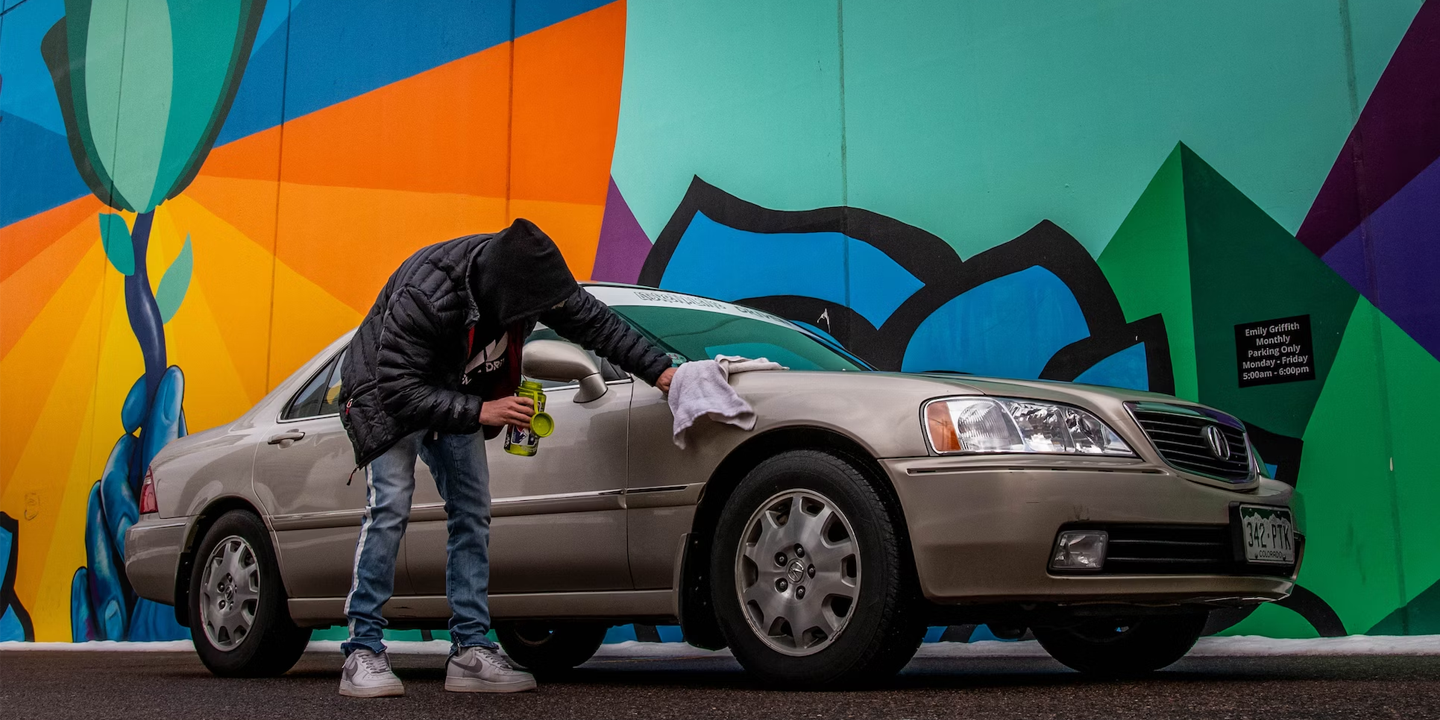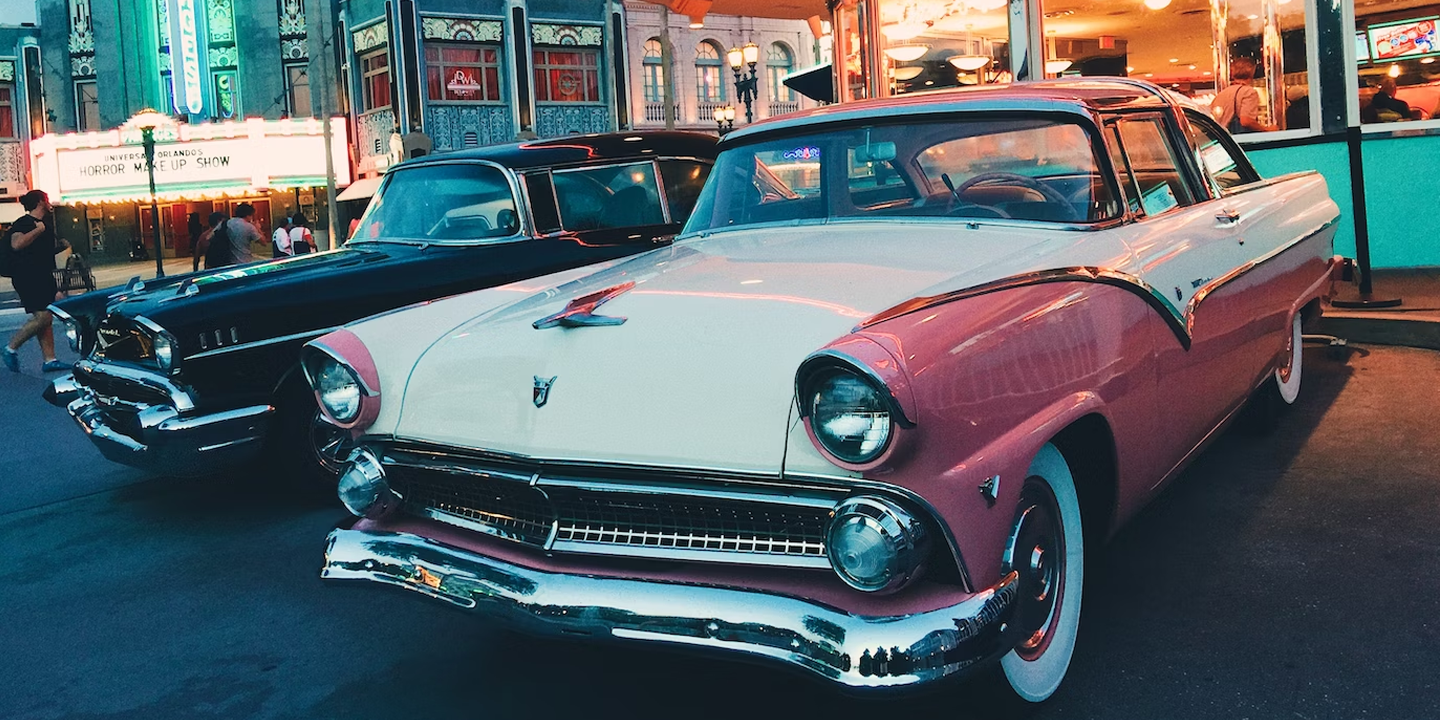Timeless Machines Fans Still Love
Age doesn’t always dull beauty. Sometimes, it defines it. So, some of the world’s oldest cars are now historical milestones on wheels. Long before hybrids and supercars, these mechanical pioneers shaped the road ahead. Let’s celebrate 20 antique cars that prove age is just mileage with style.
1. 1960 Aston Martin DB4GT Zagato
Sculpted by Zagato and powered by Aston Martin engineering, the DB4GT blends Italian artistry with British precision. Its lightweight aluminum body and race-bred performance made it a standout in its era. Today, it’s a crown jewel at car show events and vintage racing circuits alike.
 Rex Gray from Southern California on Wikimedia
Rex Gray from Southern California on Wikimedia
2. 1962 Ferrari 250 GTO
Track-bred and road-legal, the 250 GTO represents a golden age of analog performance. Drivers connect with the car physically; there’s no filter between the pedal and the pavement. It lives on not in garages but on winding roads where the V12 still sings in full, operatic glory.
3. 1955 Mercedes-Benz 300SL Gullwing
Those iconic upward doors aren't the only drama. This car brought aerospace technology to the street level through fuel injection and lightweight construction. It looked futuristic and performed like it. Seeing one today feels like stumbling onto a Cold War secret weapon painted in silver.
4. 1961 Jaguar E-Type Series 1 Roadster
More than a car, it’s a design masterpiece. Museums house them as sculptures, yet many are still in use up the Pacific Coast. Behind the wheel, it’s graceful, not aggressive—a car that doesn’t shout for attention. Ferrari’s Enzo called it “the most beautiful car ever made.”
5. 1966 Shelby Cobra 427
Built to brawl, this American brute matched European finesse with V8 thunder. It was fast, and it felt unruly, almost alive. Still seen hammering around tracks, this Cobra hasn’t been tamed. Every throttle blip feels like tapping into a kind of mechanical mischief.
 DestinationFearFan on Wikimedia
DestinationFearFan on Wikimedia
6. 1957 BMW 507 Roadster
This wasn’t just Elvis’s ride—it was his rival in charm. With sculpted curves, aircraft-inspired aluminum bodywork, and a lightweight, minimalist dash, it exudes refined restraint. Built in limited numbers, it’s a collector’s symphony: rare and perfectly tuned for those who prefer a timeless appeal.
7. 1967 Toyota 2000GT
Only 351 units were made, yet the 2000GT redefined global perceptions of Japanese cars. With a Yamaha-tuned inline-six engine, aluminum bodywork, and performance rivaling European icons, it was rare and revolutionary. This was Japan’s declaration that it could build world-class sports cars.
8. 1964 Porsche 904 Carrera GTS
You won’t find luxury comforts here—only a racing soul disguised as elegance. The Carrera brought fiberglass into motorsport with uncompromising intent. It doesn’t chase nostalgia; it demands respect from those who see driving as a balance between weight, grip, and willpower.
9. 1969 Dodge Charger Daytona
It was banned from NASCAR for being too good. That towering rear wing wasn’t vanity—it was science ahead of its time. Amid an era dominated by algorithmic aerodynamics, the Daytona is proof that raw experimentation once ruled the road and won.
10. 1955 Porsche 550 Spyder
Built for endurance racing, the 550 Spyder featured a 1.5L flat-four engine and weighed under 1,500 pounds. Its mid-engine layout offered precise balance, influencing future Porsche design. Most surviving models are still track-driven today and maintained for historic racing under FIA regulations.
11. 1953 Aston Martin DB2/4 Drophead Coupé
Long before Bond, this Aston whispered espionage elegance. With its wood-trimmed dash and leather-scented cabin, it’s less a car and more a gentleman’s drawing room in motion. Today, it’s revered not for gadgets but for grace—discreet, dignified, and endlessly distinguished.
 Rex Gray from Southern California on Wikimedia
Rex Gray from Southern California on Wikimedia
12. 1954 Buick Skylark Convertible
The 1954 Skylark capped Buick’s 50th anniversary with hand-finished flair, including full-wheel cutouts and a lowered stance. Only 836 were built. So, it is one of the rarest postwar Buicks. Its striking design and limited production continue to attract serious collectors.
 Greg Gjerdingen from Willmar, USA on Wikimedia
Greg Gjerdingen from Willmar, USA on Wikimedia
13. 1963 Chevrolet Corvette Split-Window
Designed for symmetry, cursed by visibility—the split window was a one-year wonder turned icon. Its flaw became its fame. Like all things that age gracefully, it’s the imperfections that make it memorable, the bold choices that make it unforgettable.
 Herranderssvensson on Wikimedia
Herranderssvensson on Wikimedia
14. 1969 Ford Mustang Boss 429
Built to meet NASCAR homologation requirements, the Boss 429 was engineered for the track but unleashed on the street. Ford shoehorned a massive 429-cubic-inch V8 into the Mustang and produced just over 1,300 units. The car’s low production run and motorsport roots cement its legendary status.
 Greg Gjerdingen from Willmar, USA on Wikimedia
Greg Gjerdingen from Willmar, USA on Wikimedia
15. 1951 Hudson Hornet
Dominating NASCAR in the early 1950s, the Hornet used a “step-down” chassis for a lower center of gravity. Its high-torque inline-six gave it a racing edge. Though understated in appearance, its engineering made it a pioneer of performance before muscle cars existed.
16. 1957 Chevrolet Bel Air Convertible
It was the first Chevrolet to offer factory fuel injection on a mass-market V8, narrowing the gap between family cruisers and performance machines. Unlike later muscle cars, it blended innovation with elegance. It’s prized as the moment when style and tech finally shook hands.
17. 1962 Lincoln Continental Convertible
Its doors open backward, but its legacy only moves forward. Designed under Elwood Engel, this convertible redefined presidential and executive transport. Its minimalist slab-sided design has influenced luxury aesthetics for decades, and it remains one of the few four-door convertibles that are still actively driven.
 Greg Gjerdingen from Willmar, USA on Wikimedia
Greg Gjerdingen from Willmar, USA on Wikimedia
18. 1966 Alfa Romeo Giulia Sprint GTA
Constructed with aluminum panels and Perspex windows, the GTA weighed under 1,800 pounds. Its twin-cam engine and close-ratio gearbox made it a touring car champion. Unlike many classics, it's still valued not for nostalgia but for precision that few modern cars can match.
 Andrew Bone from Weymouth, England on Wikimedia
Andrew Bone from Weymouth, England on Wikimedia
19. 1971 Lamborghini Miura SV
The Miura SV introduced upgraded carburetors, wider rear tracks, and refined suspension, making it the most drivable of the Miura line. Its transverse V12 placement influenced decades of supercar architecture. Owners still run them hard on open roads today.
20. 1956 Continental Mark II
Priced higher than a Rolls-Royce, the Mark II was Ford’s no-expense-spared flagship. Each car took two weeks to complete, with hand-finished paint and bespoke interiors. It wasn’t built for the masses—it was built to restore American prestige in the global luxury market.




















